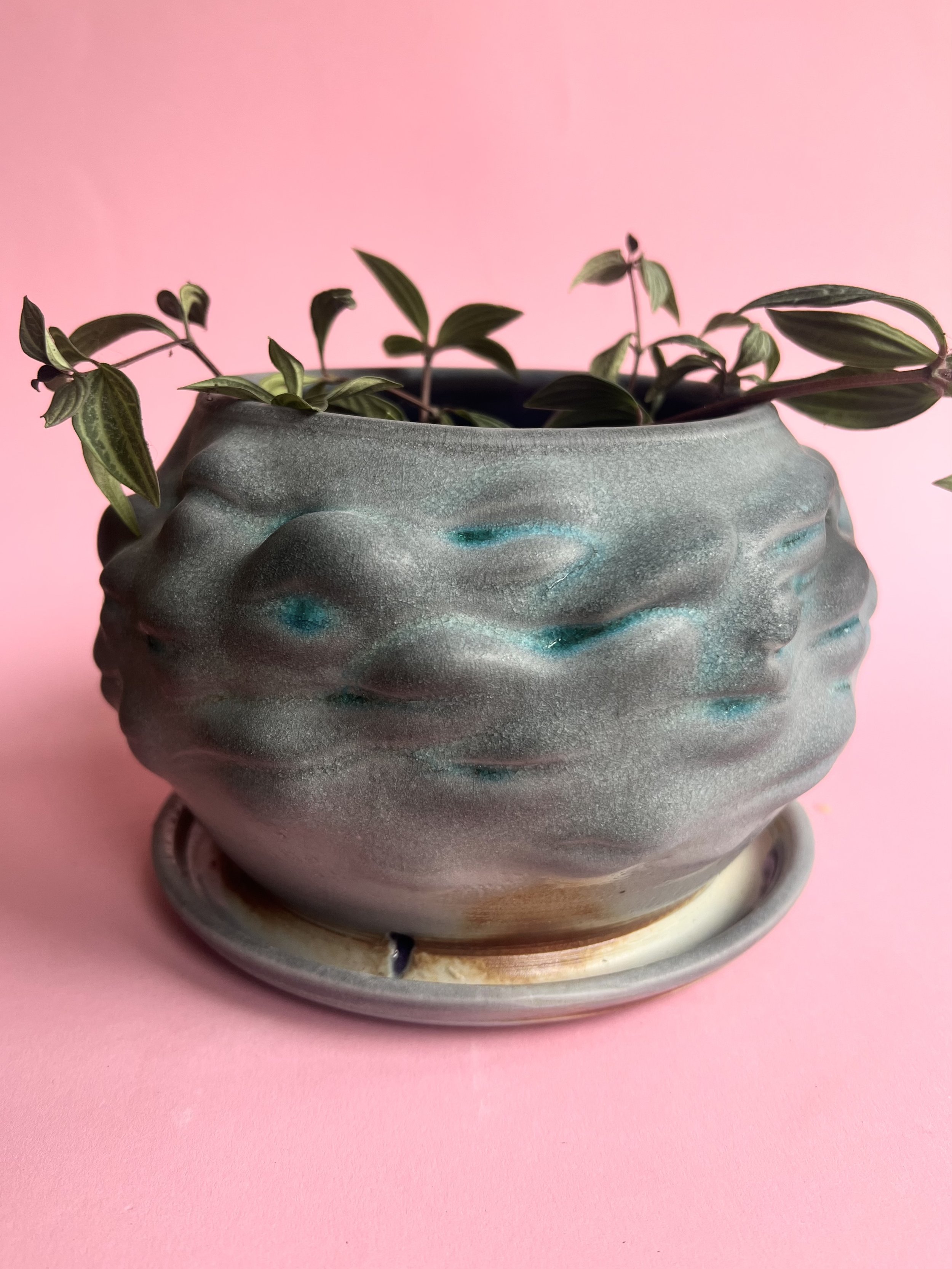 Image 1 of 10
Image 1 of 10

 Image 2 of 10
Image 2 of 10

 Image 3 of 10
Image 3 of 10

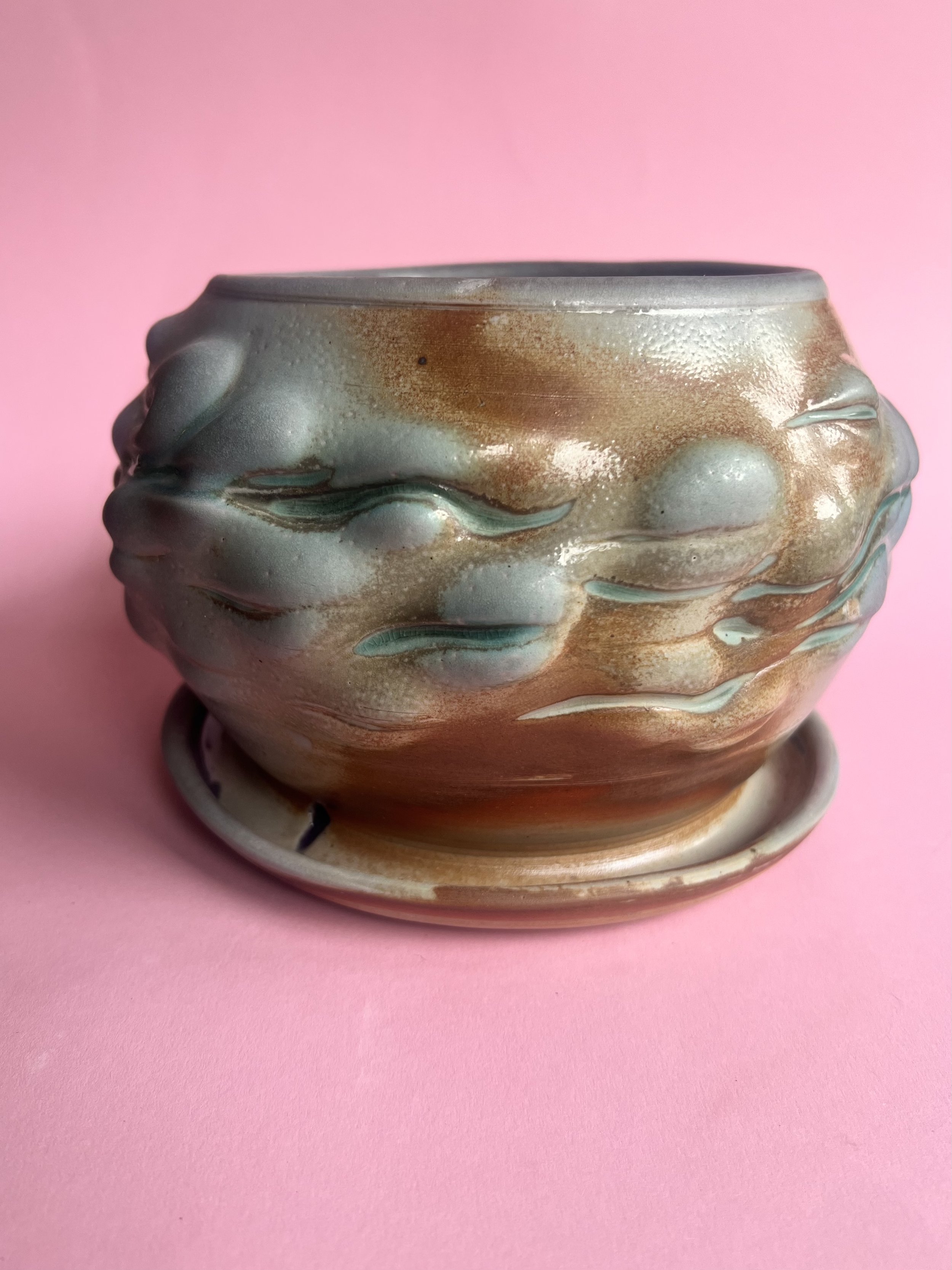 Image 4 of 10
Image 4 of 10

 Image 5 of 10
Image 5 of 10

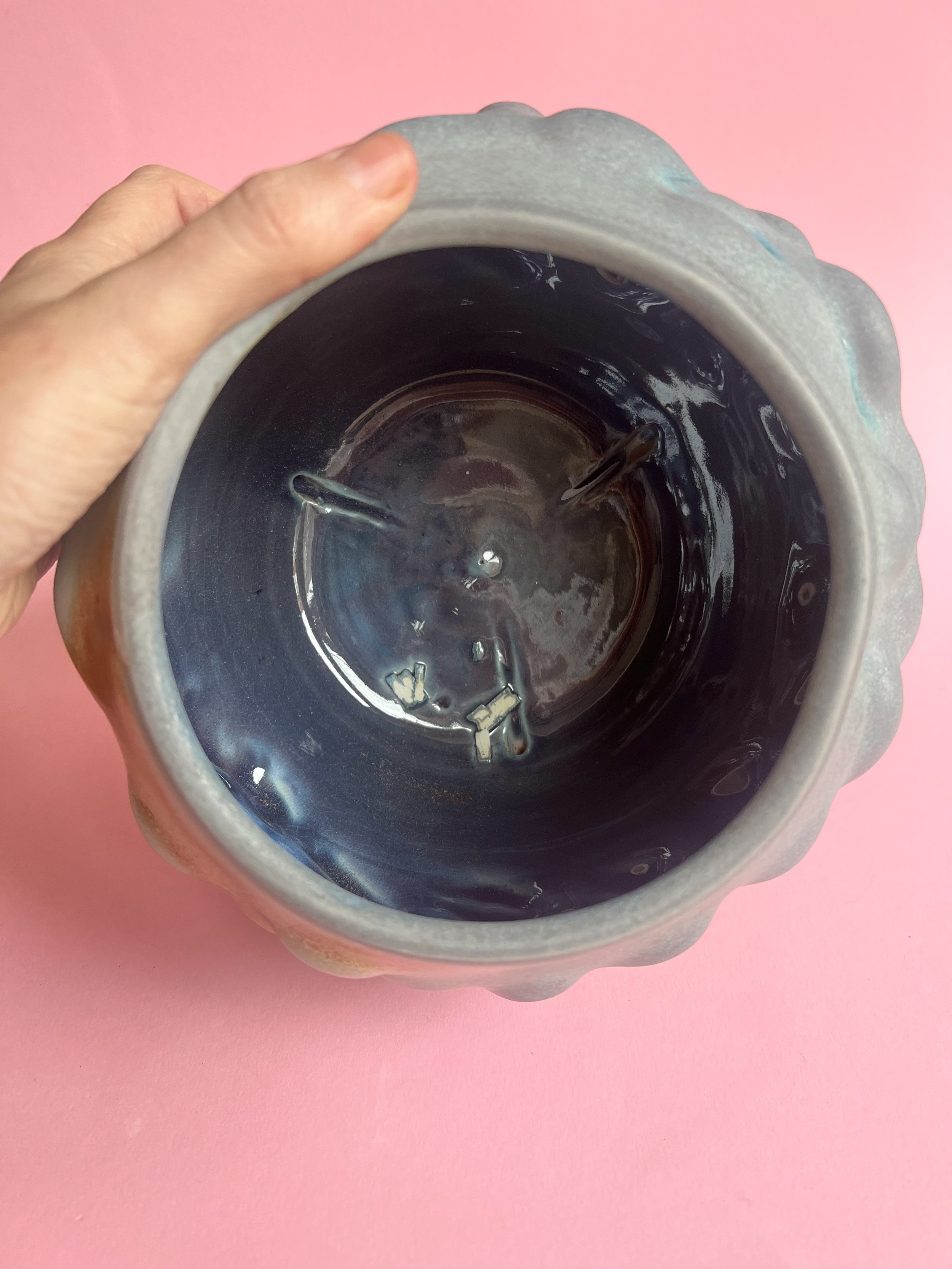 Image 6 of 10
Image 6 of 10

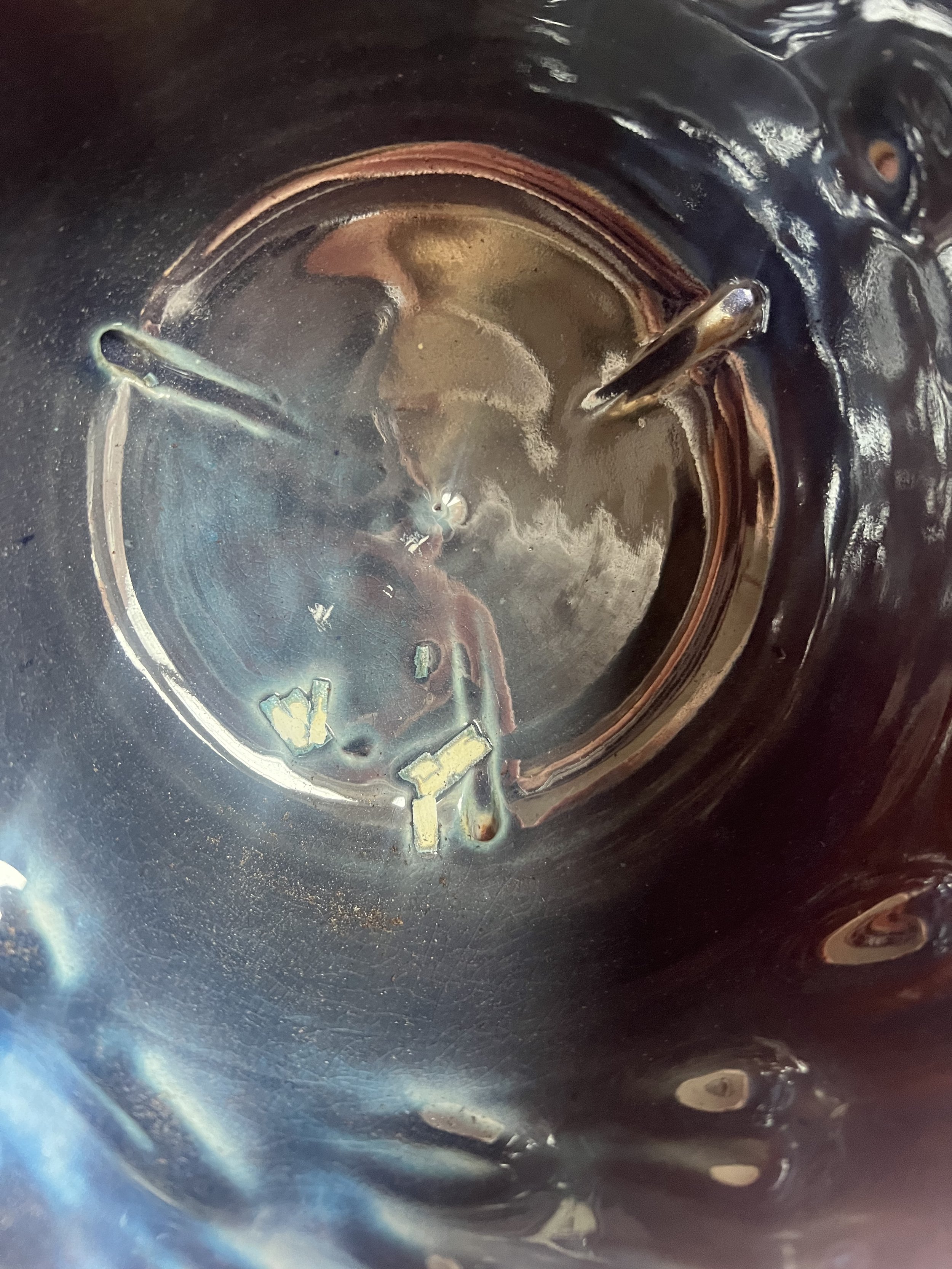 Image 7 of 10
Image 7 of 10

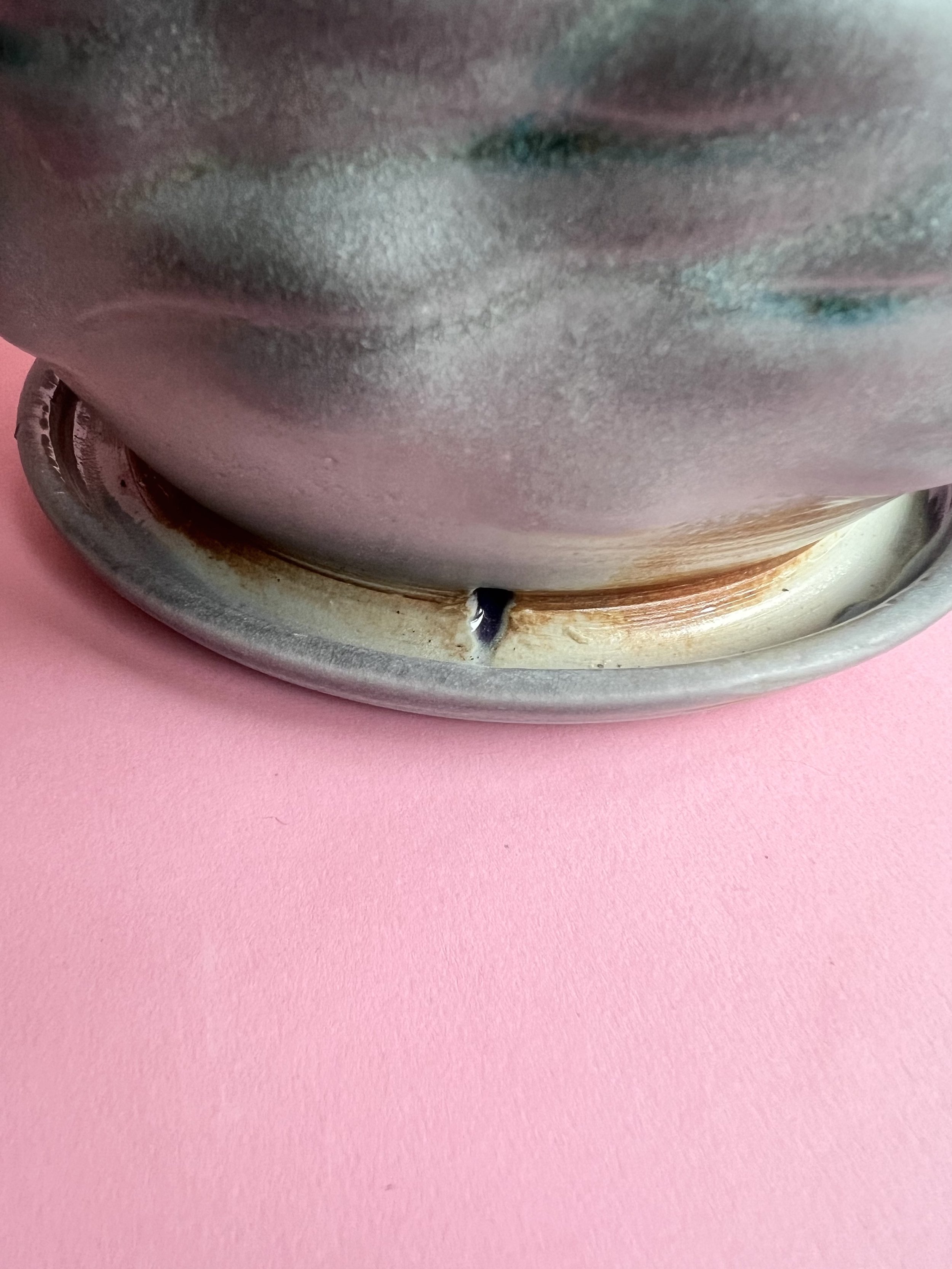 Image 8 of 10
Image 8 of 10

 Image 9 of 10
Image 9 of 10

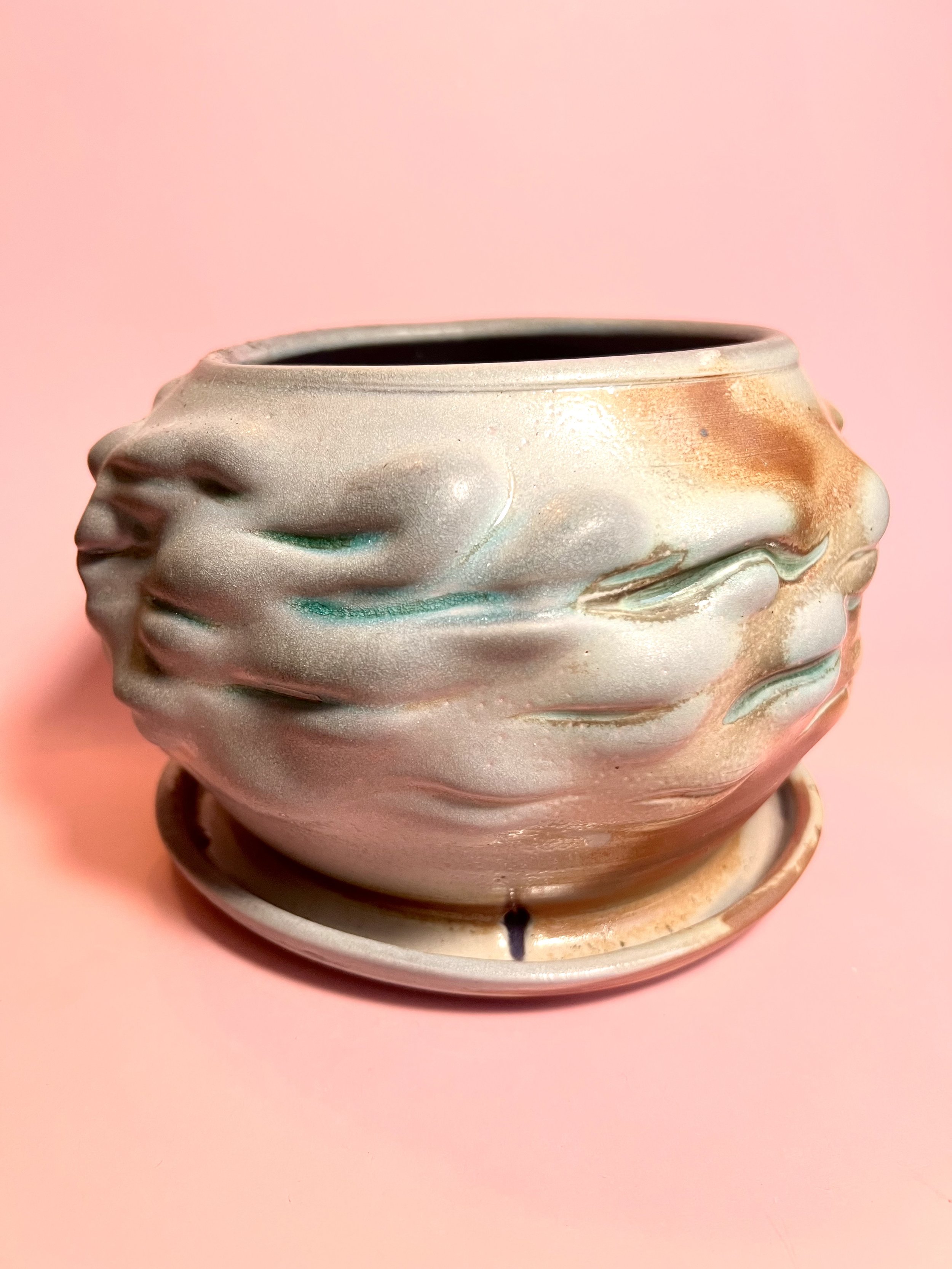 Image 10 of 10
Image 10 of 10











Planter: Moon Rock (Medium)
What a gift from the soda kiln. I’ve held onto this one for a while because when something this special comes out that you just can’t replicate it’s hard to let it go.
These curving vessels are thrown on the wheel and then patiently, lovingly formed, carved and smoothed in several stages. These are the pieces that take the most time and care. They are a meditation and are inspired by clouds, blooms and feminine curves and are driven by intuition and a search for a swirling balance.
Each soda fired piece is one-of-a-kind as atmospheric firings are unpredictable and can yield stunning results. Soda firing takes an enormous amount of time, energy, labor and resources and is usually a community effort. In the soda firing process, soda ash (sodium carbonate) is added to the kiln at cone 9 (2300°) and the sodium vapor combines with silica in clay to create a sodium-silicate glaze effect. The soda also interacts with the slips and glazes to create swirling unpredictable colors that shift and change around the piece. The marks on the bottom are from the wadding used to hold the piece up off the kiln shelf so that glaze drips won’t fuse it to the shelf. They can leave lovely flame marks and are a telltale sign a piece is soda fired, though they don’t always happen, especially in low soda areas of the kiln.
I always add several drainage holes in case any get closed up by glaze. 2 of the 3 holes are clear, there is some sediment inside from the roof of the soda kiln. Your plants won’t mind.
What a gift from the soda kiln. I’ve held onto this one for a while because when something this special comes out that you just can’t replicate it’s hard to let it go.
These curving vessels are thrown on the wheel and then patiently, lovingly formed, carved and smoothed in several stages. These are the pieces that take the most time and care. They are a meditation and are inspired by clouds, blooms and feminine curves and are driven by intuition and a search for a swirling balance.
Each soda fired piece is one-of-a-kind as atmospheric firings are unpredictable and can yield stunning results. Soda firing takes an enormous amount of time, energy, labor and resources and is usually a community effort. In the soda firing process, soda ash (sodium carbonate) is added to the kiln at cone 9 (2300°) and the sodium vapor combines with silica in clay to create a sodium-silicate glaze effect. The soda also interacts with the slips and glazes to create swirling unpredictable colors that shift and change around the piece. The marks on the bottom are from the wadding used to hold the piece up off the kiln shelf so that glaze drips won’t fuse it to the shelf. They can leave lovely flame marks and are a telltale sign a piece is soda fired, though they don’t always happen, especially in low soda areas of the kiln.
I always add several drainage holes in case any get closed up by glaze. 2 of the 3 holes are clear, there is some sediment inside from the roof of the soda kiln. Your plants won’t mind.
